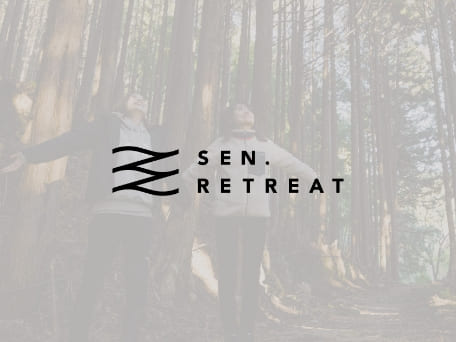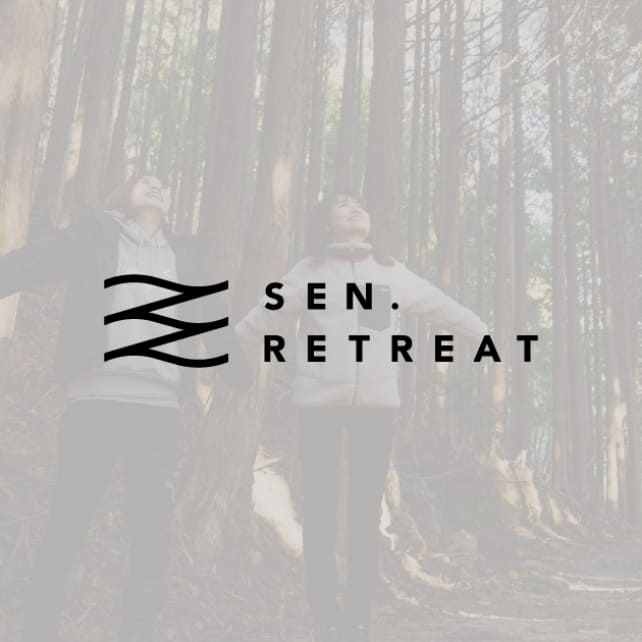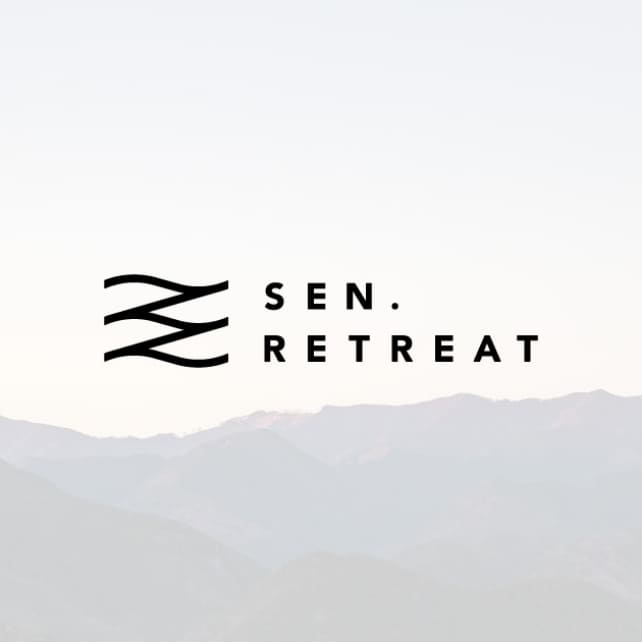
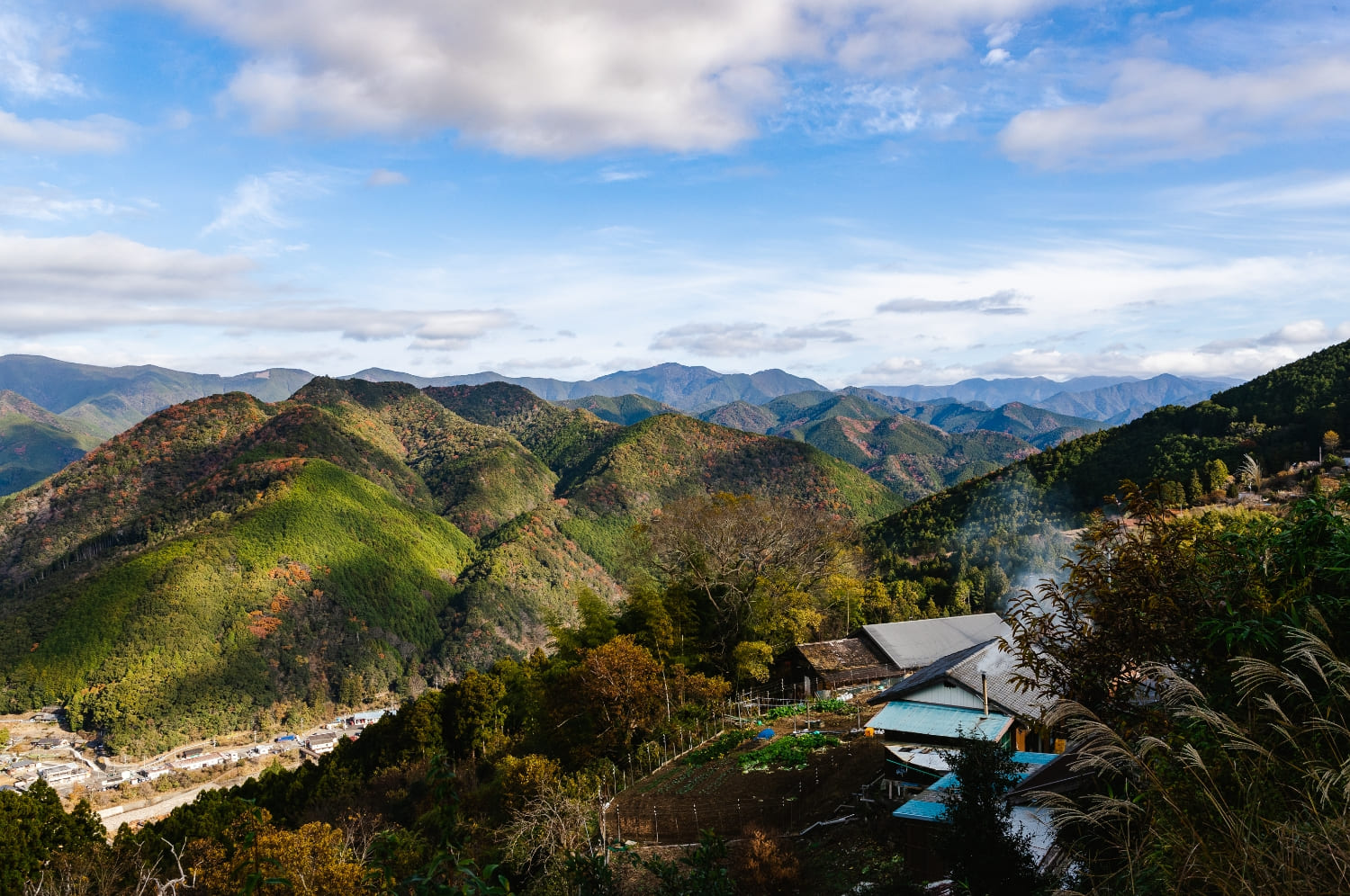
Cherry Blossoms, Ginkgo, and Art Museums: 10 Sightseeing Spots on the Kumano Kodo Nakahechi (UNESCO World Heritage Site)

Then and now, the UNESCO World Heritage–listed Kumano Kodo continues to attract visitors.
The Kumano Kodo refers to a network of pilgrimage routes in Wakayama Prefecture that lead to the Kumano Sanzan—Kumano Hongu Taisha, Kumano Nachi Taisha, and Kumano Hayatama Taisha. Once walked by devotees on the historic Kumano Pilgrimage, these sacred paths are today celebrated as spiritual sites and draw travelers from across Japan.
In this article, we spotlight sights along the Nakahechi Route, one of the main routes of the Kumano Kodo. The Nakahechi runs from the Tanabe area toward the Kumano Sanzan and is lined with can’t-miss highlights such as the Kumano Kodo Information Center (Kumano Kodo-kan), Takijiri Ōji, Gyūba-dōji, Chikatsuyu Ōji, and Nonaka.
We’ll introduce these spots in the order you’ll encounter them as you make your way from around JR Kii-Tanabe Station, the starting point for the Nakahechi, toward Kumano Hongu Taisha.
Want to learn more about the Kumano Kodo? Check out our in-depth guide as well.
Tomb of Kiyohime.
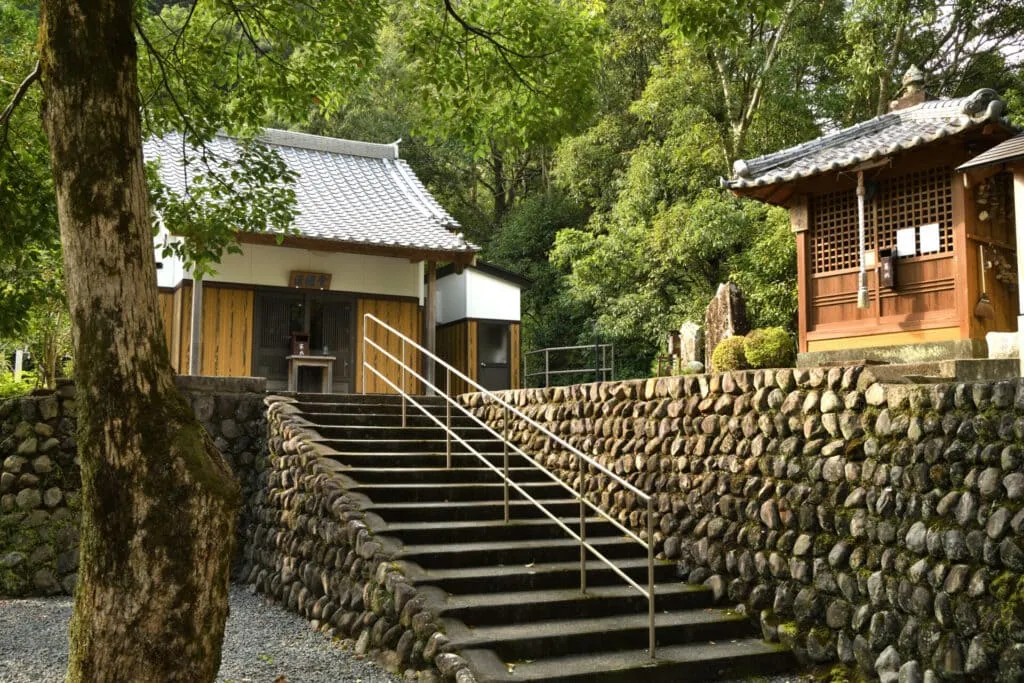
Along the Nakahechi route there are numerous sites tied to Kiyohime from the legend of Dōjōji. The Masago area of Nakahechi Town—where Kiyohime’s grave stands—is believed to be her birthplace, and a monument marking the Masago Clan Residence Site, said to be the birthplace, stands nearby.
According to tradition, Kiyohime was born to Fujiwara no Kiyoshige (a court official holding the title Saemon-no-jō) and the “incarnation of a white snake” whom Kiyoshige had saved from a black snake. Kiyohime fell in love with a monk named Anchin from Ōshū Shirakawa who was on pilgrimage to Kumano. When their union proved impossible, she transformed into a great serpent and burned Anchin to death as he hid inside the bell of Dōjōji Temple—the tale remembered today as the Dōjōji legend.
About 2 km north of Kiyohime’s grave, consider visiting Fukugan-ji (Ichigan-ji), which houses the Kiyohime Hall.
Within the temple precincts stands a Jizō statue popularly called Ichigan-ji, as it is said to grant a single heartfelt wish. It is also affectionately known as the “Mustard Jizō” (Karashi Jizō): local lore holds that offering mustard—together with sake, favored by a priest who famously died seated in meditation here after composing his death poem—will help one wish come true.
Address.
Tomb of Kiyohime:〒646-1415 374-1 Masago, Nakaheji-cho, Tanabe City, Wakayama Prefecture
Fukuganji Temple (Ichiganji Temple):〒646-1414 575 Nishitani, Nakaheji-cho, Tanabe City, Wakayama Prefecture
Access.
Tomb of Kiyohime:Approx. 30 minutes by bus from JR Kii-Tanabe Station, 2-minute walk from Kiyohime bus stop.
Fukuganji Temple (Ichiganji Temple):35-minute walk from Kiyohime’s tomb.
Parking lot.
Tomb of Kiyohime:Yes (free of charge, 10 cars).
Fukuganji Temple (Ichiganji Temple):Yes
Official website
Fukuganji Temple (Ichiganji Temple):https://www.ichiganji.com/
Takijiri Oji
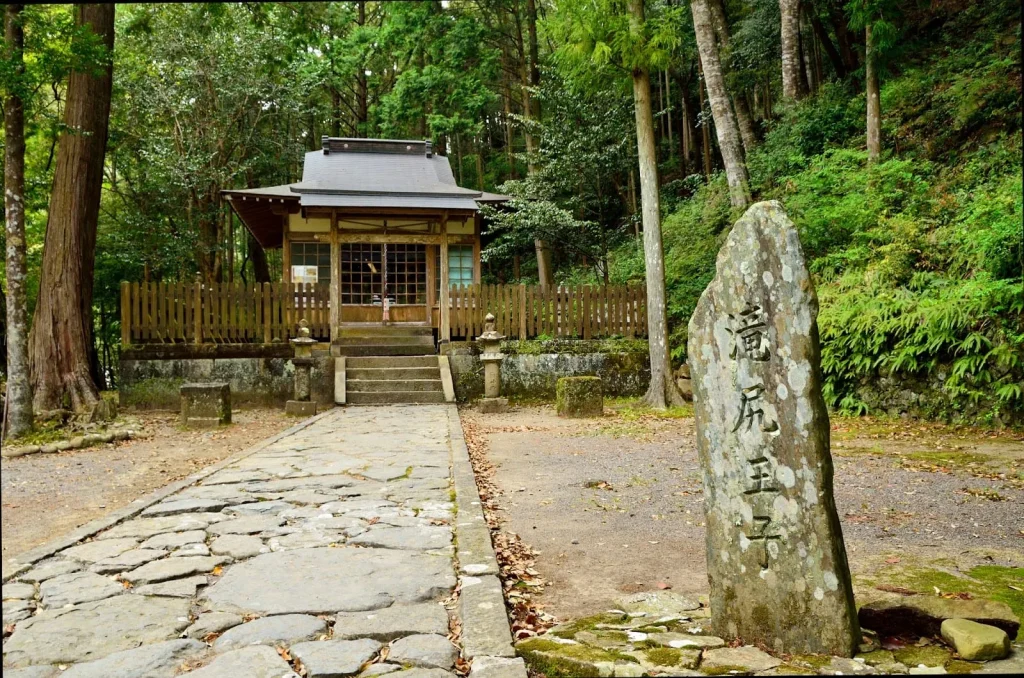
As you walk the Kumano Kodo, you’ll come across many sites named Ōji—subsidiary roadside shrines where, from the 12th to 13th centuries, Shugendō ascetics (yamabushi) paused during the Kumano pilgrimage to conduct rituals at local sanctuaries dedicated to indigenous deities. Because these ascetics often guided retired emperors and court nobles on their pilgrimages, the Ōji were maintained as places to pray for protection along the route.
There were said to be over a hundred such sites, collectively known as the Kujūku Ōji—“ninety-nine Ōji,” a phrase meaning “many.” Among them, Takijiri Ōji is one of the Five Grand Ōji shrines, and from this point onward the path was regarded as entering the sacred domain.
Takijiri Ōji stands at the confluence of the Tonda River and the Ishiburi River. The name Takijiri is said to come from the way the swift waters of the Ishiburi pour into the Tonda like a waterfall.
Address.
〒646-1421 859 Kurisugawa, Nakaheji-cho, Tanabe City, Wakayama Prefecture
Access.
From JR Kii-Tanabe Station, 40 minutes by Ryujin Bus, alight at Takijiri bus stop.
Parking lot.
Use the parking lot of the Kumano Kodo Museum (free of charge, 80 spaces).
Kumano Kodokan
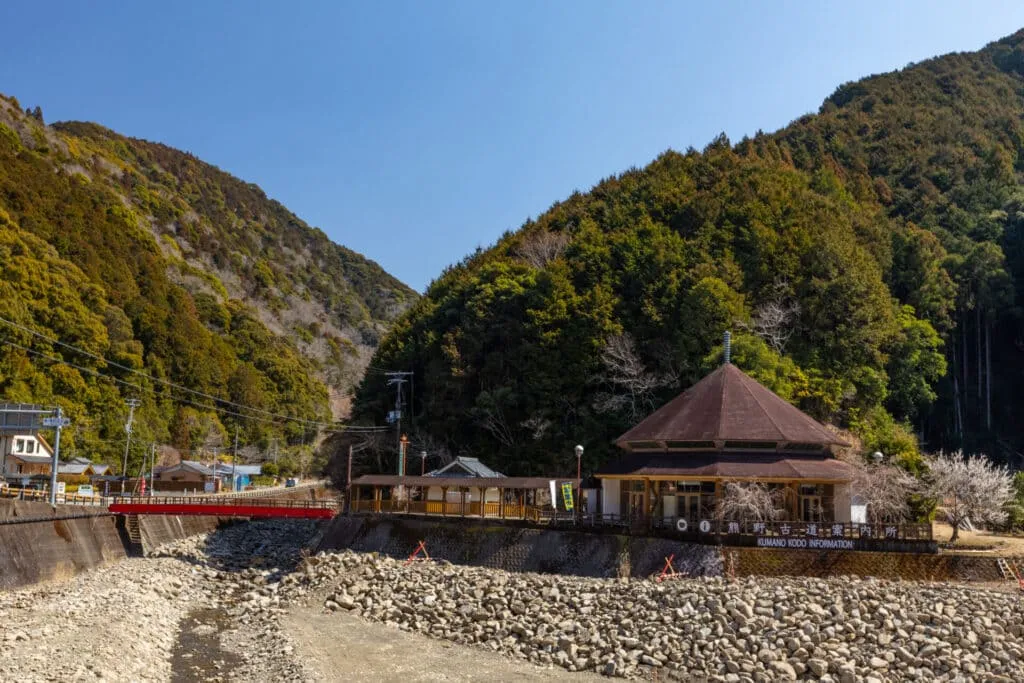
Directly across from Takijiri Ōji stands the Kumano Kodo Information Center (Kumano Kodo-kan)—a visitor center where you can rest and learn about the Nakahechi route’s history and culture. Its charming 12-sided roof is said to symbolize the twelve Ōji shrines found within the town.
Before you start walking the Kumano Kodo, it’s worth stopping by the center to get oriented and delve into the background of the pilgrimage. You’ll see the ancient road with new eyes.
Opening hours.
9:00 – 17:00 (Closed: Year-end and New Year holidays)
Admission.
Free of charge
Address.
12222 Kurisugawa, Nakaheji-cho, Tanabe City, Wakayama Prefecture
Access.
40 minutes by bus from JR Kii-Tanabe Station, short walk from Takijiri bus stop.
Parking lot.
Yes (free of charge, 40 cars).
Takahara Kumano Shrine

The Takahara Kumano Shrine is the oldest remaining shrine along the Kumano Kodo, with a colourful shrine pavilion and a 1,000-year-old camphor tree. The size of the camphor tree is sure to surprise you! It is also a popular power spot on the Kumano Kodo.
This shrine was almost lost during the Meiji era (1868-1912) when the Shinto and Buddhist traditions were combined, but it was somehow spared and has survived to the present day. Be sure to visit the Takahara Kumano Shrine, which has survived to the present day by a miracle.
Nearby is the Plateau Fog Village Resting Area, a spot where, if you are lucky, you can see a sea of clouds. The view of the sunset is also beautiful, so a visit is recommended.
If you are looking for accommodation in the area, we also recommend the SEN.RETREAT TAKAHARA, which just opened in 2022! It is an uninhabited accommodation for walkers on the Kumano Kodo, where you can stay without worrying about your surroundings. You can also enjoy BBQ using seasonal ingredients from Kumano.
Address.
〒646-1416 1120, Takahara, Nakaheji-cho, Tanabe City, Wakayama Prefecture, Japan
Access.
From JR Kii-Tanabe Station, 44 minutes by bus, approx. 30 minutes‘ walk from Kodogaoka bus stop, or 1 hour and 45 minutes’ walk from Takijiri bus stop.
From Kamitonda IC, 30 mins by car.
Parking lot.
‘Takahara-kirinosato Rest Area’ parking lot.(free of charge, 15 vehicles).
Ginkgo biloba (Ginkgo biloba) in Fukusada

The Fukusada Great Ginkgo (Fukusada no Ōicho) stands within the precincts of Hōsen-ji Temple in Tanabe. Estimated at around 400 years old, it rises to 22 meters (about 72 ft) with a trunk circumference of 5.3 meters. Designated a Natural Monument by Tanabe City, the tree branches into multiple trunks at around four meters above the base—hence its nickname, the “Senbon Ginkgo” (“thousand-trunk ginkgo”).
From late October to mid-November, visitors from across Japan come to admire its peak autumn foliage. The tree’s presence is striking even from afar, and the golden carpet of fallen leaves is a highlight in its own right.
If you’re walking the Kumano Kodo, be sure to include this magnificent ginkgo on your route.
Address.
〒646-1432 Fukusada, Nakahechi-cho, Tanabe City, Wakayama Prefecture
Access.
Approx. 50 minutes by bus from JR Kii-Tanabe Station, 10 minutes walk from Ujiyama Bridge bus stop.
About 45 minutes by car from the Nanki Tanabe IC on the Hanwa Expressway.
Parking log.
Yes (free of charge, 10 cars).
Statue of Gyuba Doji
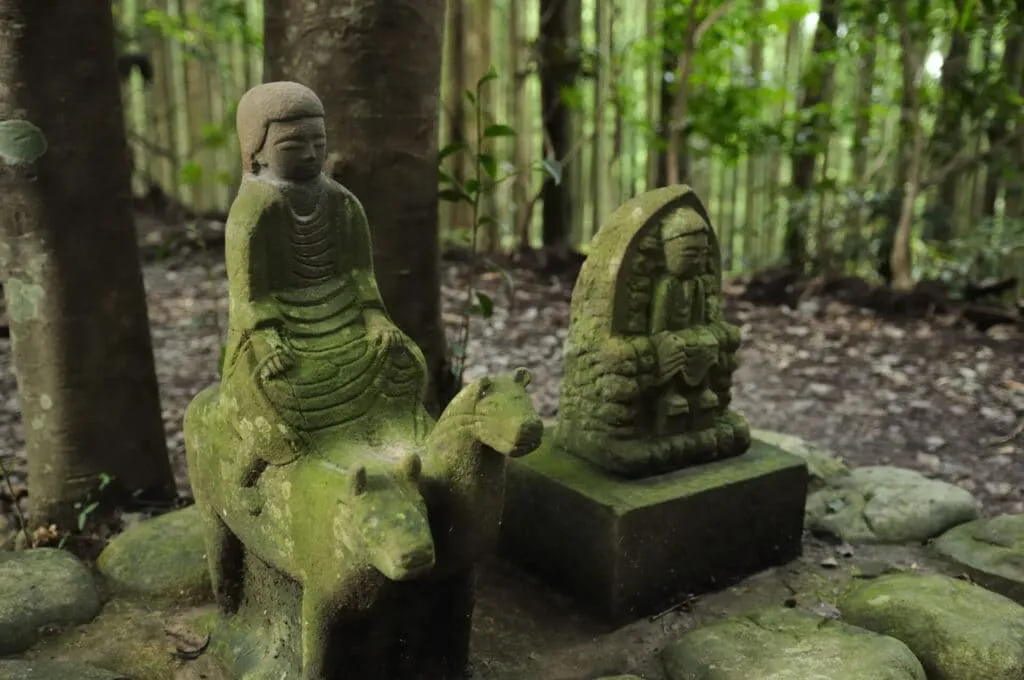
The Gyūba-dōji Statue at Hashiori Pass (Hashiori-tōge) was created in the Meiji era and, at only about 50 cm tall, has an irresistibly charming form. It is a Tanabe City–designated historic site and an enduring symbol of the Nakahechi route.
The statue is said to commemorate Retired Emperor Kazan (Kazan Hōō) in his youth. Nearby there’s a small pavilion that offers a sweeping view of the surrounding countryside—well worth a quick stop.
The pass’s name, “Hashiori” (“chopstick-breaking”), is traditionally explained by a story that during the emperor’s Kumano pilgrimage he paused here for a meal and snapped a stalk of kaya (pampas grass) to use as chopsticks.
Address.
〒646-1402 1940 Chikaro, Nakahechi-cho, Tanabe City, Wakayama Prefecture, Japan
Access.
Bus minutes from JR Kii-Tanabe Station, alighting at Ushibadokuchi bus stop.
Parking lot.
Use the Chikatsuyu Oji Park parking lot.(free of charge, 35 vehicles)
Kumano Kodo Nakahechi Art Museum
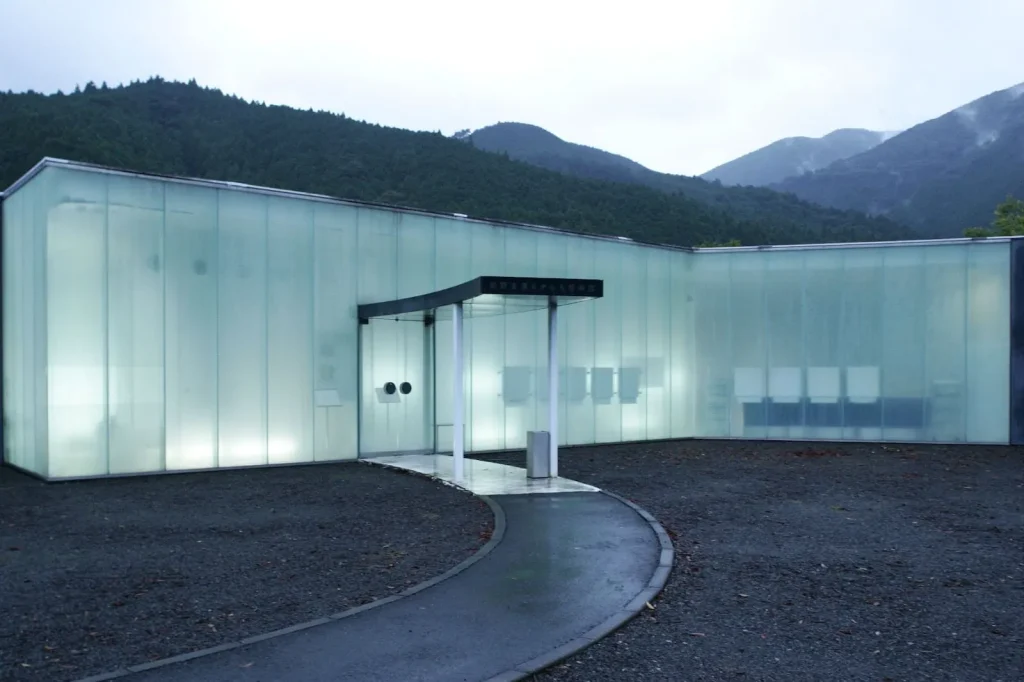
There’s more to the Kumano Kodo than nature and historic sites.
The Kumano Kodo Nakahechi Art Museum, located along the Nakahechi Route, is the first museum designed by the internationally renowned architecture duo SANAA (Kazuyo Sejima + Ryue Nishizawa). It was conceived to “present artworks in a new kind of space and create a place for exchange through art.” One of SANAA’s best-known works is the 21st Century Museum of Contemporary Art, Kanazawa.
The museum’s collection centers on painters from Nakahechi, including Nonagase Banka and Watase Ryōun, and it hosts regular special exhibitions.
It’s about 500 meters from the Gyūba-dōji statue—perfect for pairing the two on your visit.
Opening hours.
10:00-17:00 (entry until 16:30).
Closed day
Every Monday (or the following day if Monday is a public holiday or substitute holiday)
Day after a public holiday (except Saturdays and Sundays)
28 December – 4 January
Admission fee.
Exhibition of museum collections 260 yen, small exhibitions 200 yen, special exhibitions to be determined on a case-by-case basis.(Free of charge for students under 18 years old).
Address.
〒646-1402 891 Chikatsuyu, Nakahechi-cho, Tanabe City, Wakayama Prefecture, Japan
Access.
From JR Kii-Tanabe Station, take the Ryujin Bus (approx. 60 mins) and alight at the Nakahechi Art Museum bus stop.
From Nanki-Shirahama Airport, JR Tanabe Station or JR Shingu Station, take the Meiko Bus ‘Kaisoku Kumano Kodo’ and alight at Nakahechi Art Museum bus stop.
(Approximately 1 hour from Kii Tanabe Station. From Nanki-Shirahama Airport: approx. 1 hr 50 mins. From Shingu Station: approx. 1 hr 30 mins).
Parking lot.
Free of charge, 26 vehicles.
Official website.
https://www.city.tanabe.lg.jp/nakahechibijutsukan
Chikatsuyu Oji

The route from the Gyūba-dōji statue, via the Kumano Kodo Nakahechi Art Museum, to Chikatsuyu Ōji is about 1.3 km—a great option for beginners or anyone looking for a gentler walk.
Among the many Ōji shrines, Chikatsuyu Ōji is said to be one of the earlier establishments. Today only a stone stele remains, but the spot is enclosed by lush trees and has a tranquil, atmospheric setting.
Just a one-minute walk away is Hashiori Chaya, a casual eatery with a footbath. It opens from 7:00 a.m., making it perfect for an early breakfast, picking up souvenirs, or soaking your tired feet after a trek. It pairs nicely with a visit to the museum and statue.
Address.
〒646-1402 901 Chikatsuyu, Nakaheji-cho, Tanabe City, Wakayama Prefecture
Access
1 min walk from Kumano Kodo Nakahechi Museum.
Parking lot.
Use the parking lot of the Kumano Kodo Nakahechi Museum (free of charge, 26 spaces).
Tsugizakura Ōji Shrine / The One-sided Cedar of Nonaka / The Spring of Nonaka

About an hour’s walk along the Nakahechi Route from Chikatsuyu Ōji toward Kumano Hongu Taisha brings you to Tsugizakura Ōji. Within its precincts stands a grove of enormous cedar trees known as the One-sided Cedars of Nonaka, designated a Natural Monument by Wakayama Prefecture.
Estimated to be around 800 years old, these trees have trunks up to 8 meters in circumference. They are called “one-sided” because every branch extends southward—toward Kumano Nachi Taisha—creating a strikingly mystical sight.
Today, eight of the giant trees remain. Before the shrine was merged and the forest partly cleared during the Meiji era’s shrine consolidation, there were said to be about forty. Visitors can even step inside the hollow trunk of one ancient tree—its space is large enough for around twenty adults to stand together.
Each year on November 3 and January 2–3, the Nonaka Shishimai (lion dance) takes place, a local festival with a 700-year history. If you visit during this season, don’t miss this living tradition of Kumano.
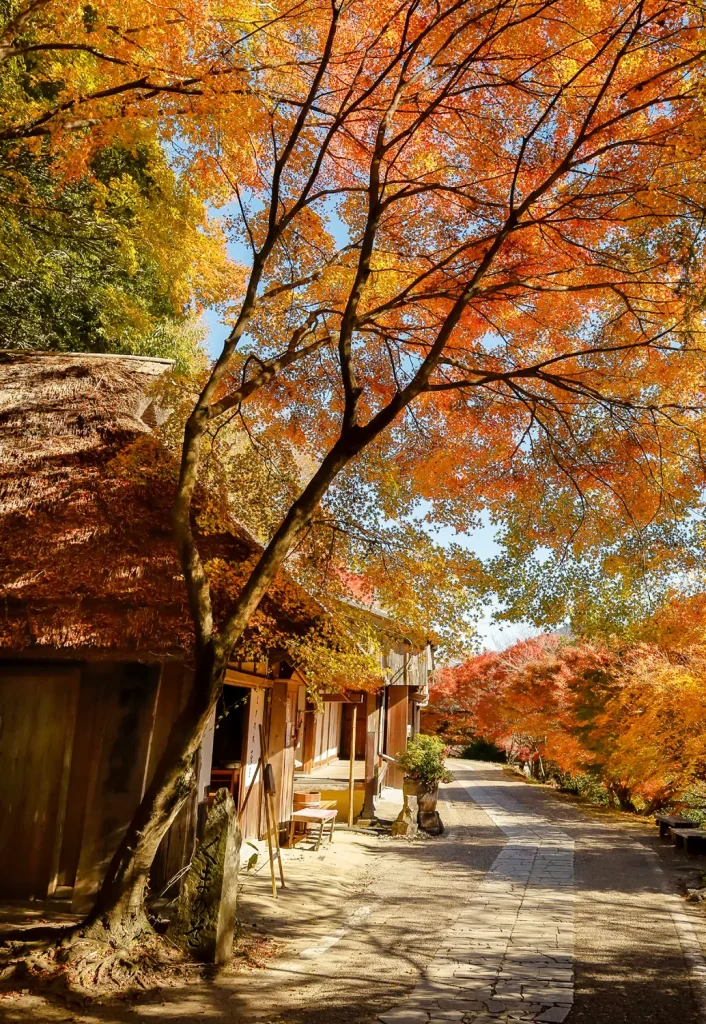
If you visit the One-sided Cedars of Nonaka, walk about 50 meters further to Toganoki Chaya, a thatched teahouse with an old irori (sunken hearth) where you can taste local Kumano dishes. Its signature item is chagayu (tea porridge)!
This area is also lovely for spring cherry blossoms, fresh green foliage in early summer, and autumn colors. The building, over 250 years old, is said to have served as a lodging for Kumano pilgrims since the Edo period (1603–1868).
Nonaka no Shimizu, selected in 1985 as one of Japan’s 100 Famous Waters, is located just below the cedars—about a 15-minute walk.
For centuries it has been a watering spot for Kumano Kodo walkers and remains a precious source of drinking and household water for locals. Remarkably, the spring has never run dry.
Opening hours.
Toganoki teahouse: 8:00-16:00.
Address.
Tsugizakura Ojisha:〒646-1401 Nonaka, Nakaheji-cho, Tanabe City, Wakayama Prefecture
Toganoki teahouse:393 Nonaka, Nakaheji-cho, Tanabe City, Wakayama Prefecture
Access.
84 minutes by bus from JR Kii-Tanabe Station, 20 minutes walk from Nonaka One Cedar bus stop.
60-minute drive from Nanki-Tanabe IC on Hanwa Expressway.
Parking lot.
Use of the Nonaka Shimizu car park (free of charge, 3 parking spaces).
Hidehira cherry (Prunus incisa)

About 100 meters from Tsugizakura Ōji Shrine stands the Hidehira Cherry Tree.
It is said that when Fujiwara no Hidehira, the feudal lord of Ōshū, made a pilgrimage to Kumano, he prayed for the safety of his child, whom he had left in a rock cave at Takijiri. He broke off a branch from a cherry tree there and grafted it onto another tree. The cherry trees that remain today are descendants of that graft, having been replanted several times over the centuries.
The Hidehira Cherry blooms later than the popular Somei Yoshino, usually lasting until mid-April.
According to legend, Hidehira and his wife long had no children. After praying at Kumano, his wife miraculously conceived, and they set out again on a pilgrimage to give thanks. When they reached Tsugizakura Ōji, the child was born unexpectedly before her term. Following a divine message, Hidehira took his wife to give birth inside a large rock cave known as Tainai Kuguri (“the womb cave”) and broke off a branch from a nearby cherry tree, saying:
“If this cherry tree is in bloom when I return from Kumano Hongu Taisha, it will be a sign that my child is safe.”
When he hurried back from his pilgrimage, the cherry tree was blooming vividly—and the infant was said to be thriving, nourished by white drops of milk flowing from the rock.
Address.
〒646-1401 Nonaka, Nakahechi-cho, Tanabe City, Wakayama Prefecture
Access.
84 minutes by bus from JR Kii-Tanabe Station, 5 minutes walk from Nonaka Ipponsugi bus stop.
Parking lot.
Use of the Nonaka Shimizu car park (free of charge, 3 parking spaces).
